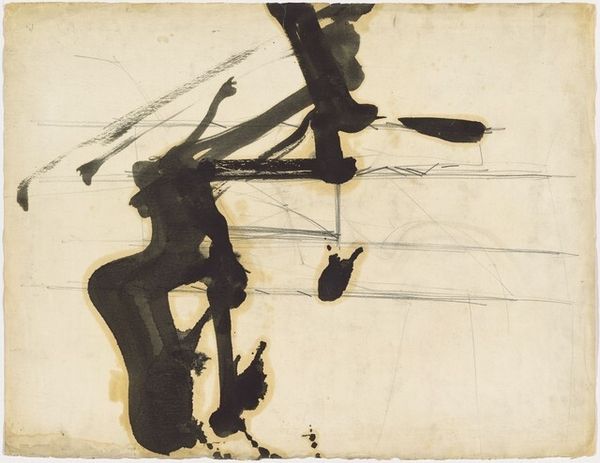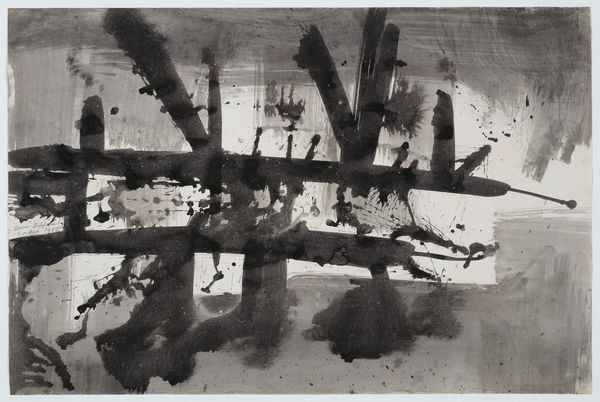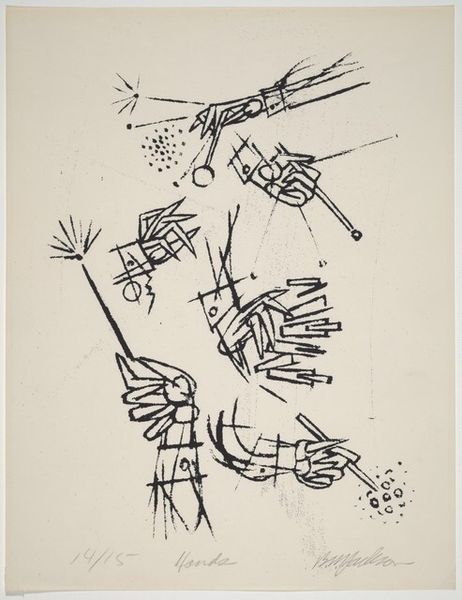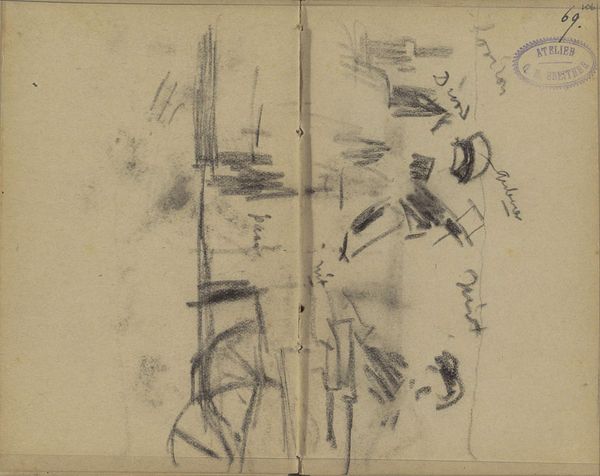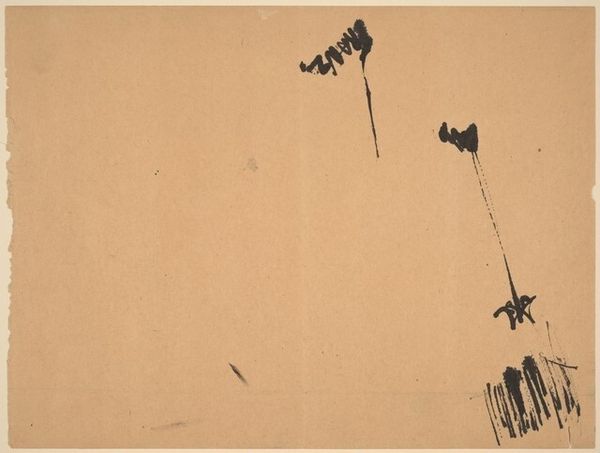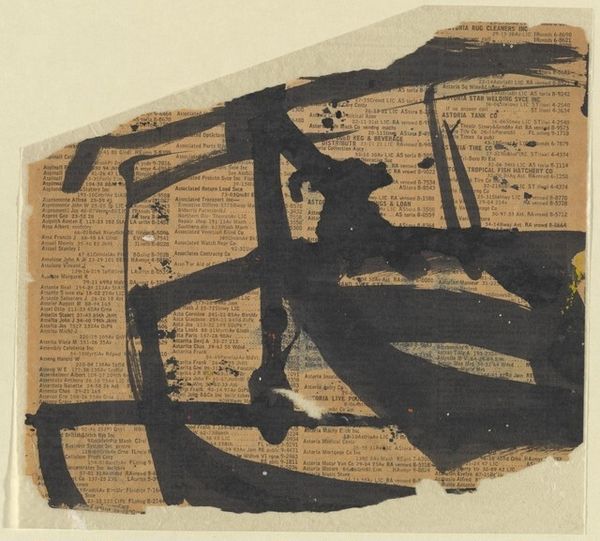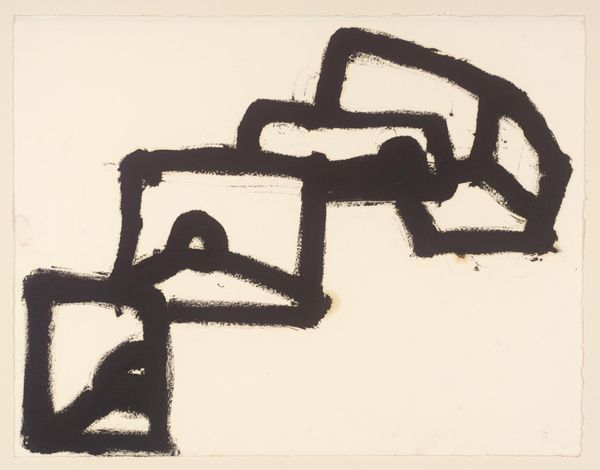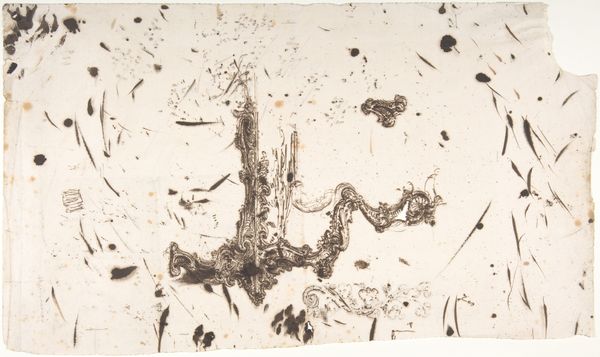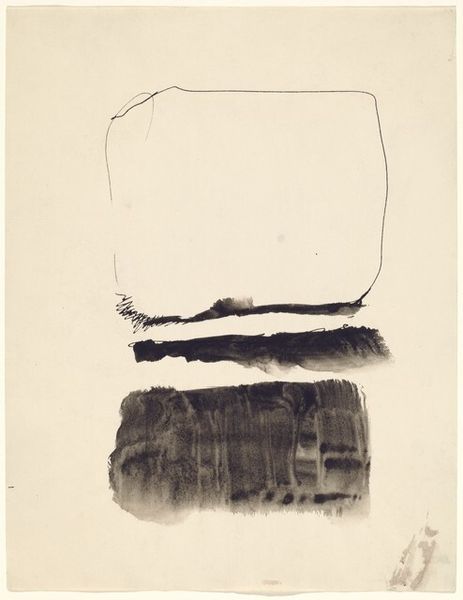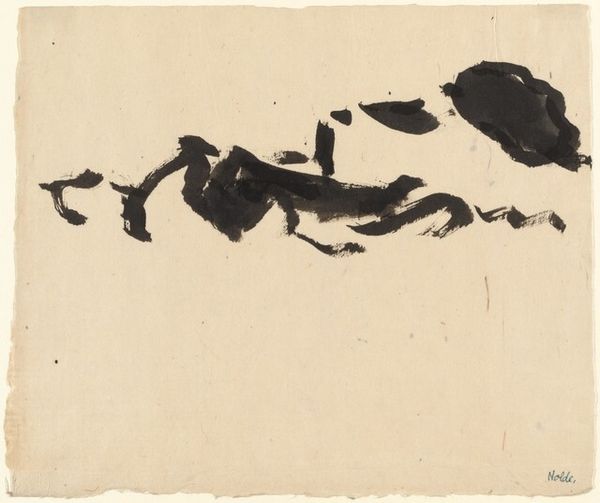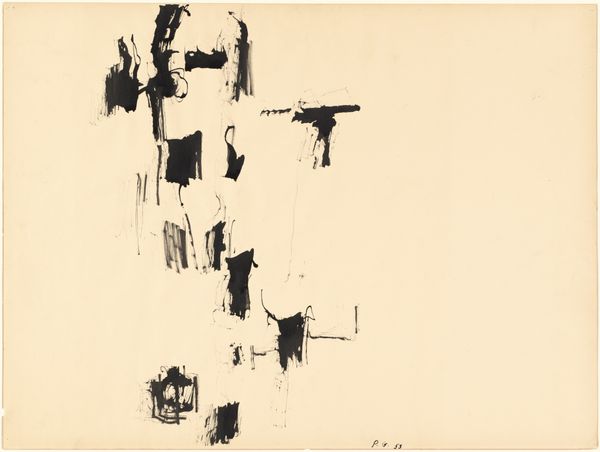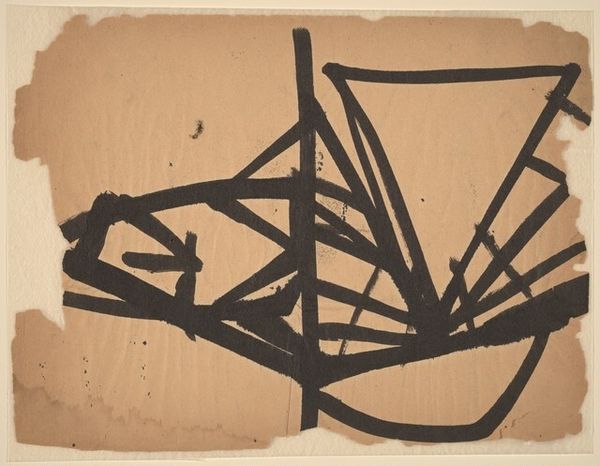
drawing, paper, gestural-painting, ink
#
abstract-expressionism
#
drawing
#
paper
#
gestural-painting
#
ink
#
abstraction
#
line
Dimensions: overall: 26.5 x 34.5 cm (10 7/16 x 13 9/16 in.)
Copyright: National Gallery of Art: CC0 1.0
Curator: Standing before us is an ink drawing on paper by Franz Kline, likely created around the 1950s. While untitled, it powerfully embodies Kline’s abstract expressionist style. Editor: My initial reaction? A sense of immediacy, almost aggressive in its stark black lines slashing across the raw paper. There's an unresolved tension in it. Curator: Absolutely. Kline emerged from a cultural landscape grappling with postwar anxiety. The lack of color and defined subject matter became a radical gesture, reflecting a broader existential unease. The social context certainly framed the work's reception. Editor: I see that tension, definitely. It resonates with theories surrounding post-war identity, almost a dismantling of previous structures. Do you think Kline, consciously or unconsciously, was grappling with a masculine identity crisis amid the evolving gender roles of the era? Curator: That’s a compelling perspective. Considering Abstract Expressionism as a movement was dominated by men, examining these artists' works through a gendered lens is really insightful. But his technique, those confident, sweeping gestures - there is an art historical connection to calligraphy. Kline moved from representational painting to total abstraction partly from seeing his drawings scaled up using a projector. Editor: Calligraphy, yes, the gestural mark! The influence brings another cultural dimension in viewing mark-making as pure expression rather than explicit representation, defying traditional Western conventions of art. What do you think were the popular responses to works such as these, then and now? Curator: Reception was – and sometimes remains – divided. Some critics celebrated the raw energy, connecting it to a sense of American resilience. Others dismissed it as chaotic and without skill. Its very abstraction defies easy categorization and continues to fuel interpretive debate. This tension between intent, execution, and response defines its cultural importance. Editor: So, ultimately, Kline gives us not just an artwork, but a lens to interrogate larger sociopolitical and even personal identity issues, all condensed within these powerfully expressive strokes. It remains profoundly relevant today. Curator: I agree. By stepping back from narrative and representation, Kline created an artwork that demands we bring our own interpretations to the table, filtered by our own social consciousness. Thank you.
Comments
No comments
Be the first to comment and join the conversation on the ultimate creative platform.

